Last bit of work on the exterior hull for now is to tone down the clinker planking. You can see in the photo on the previous post that it looks quite bright and has been ticking me off for some time, so several washes later -
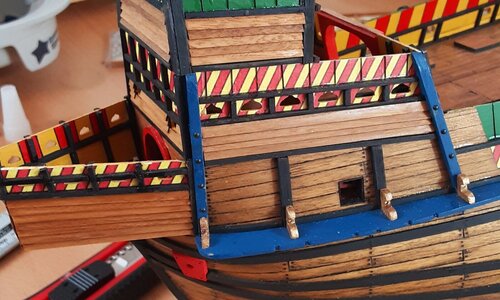
Now on to the cannon. In 1545 armaments on board were -
15 muzzle loading bronze guns
76 iron guns, a mixture of carriage mounted and ship mounted
50 handguns
250 longbows with 9,600 arrows
300 staff weapons
40 dozen darts to be thrown from the fighting tops
Ten dozen pots of lime
Lime pots would be thrown in order to blind the enemy - the chemical weapons of 1545.
Cannon provided with the kit are white metal. The castings were pretty good and joined together well, so minimal clean up
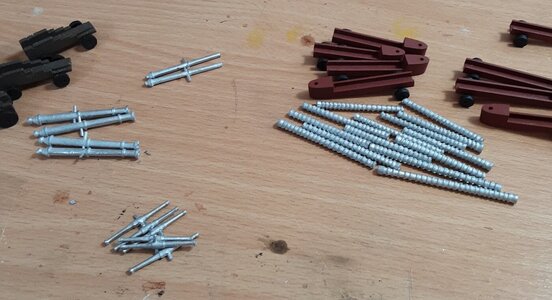
Below are the bronze cannon. They are muzzle loaders and one of those on the left was found in situ (castle deck) and has been identified as a demi-culverin, being a long range gun firing an iron shot of 4 - 5 kg.
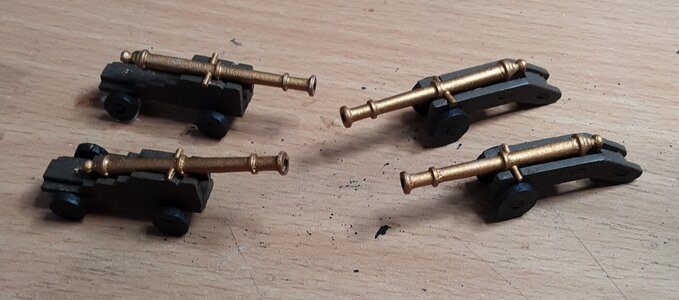
The iron guns (below) were made of iron strips bound by hoops and sat on a carriage made from a single piece of elm, hollowed out like the stock of a rifle. They fired stone shot of 4.5 - 10kg (depending on calibre) and also an anti-personnel munition of cannisters of sharp stone flakes termed 'lantern shot'.
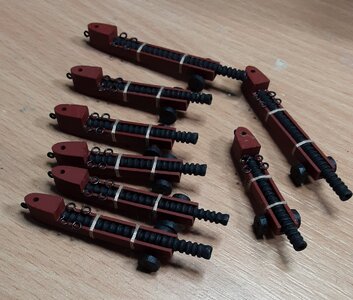
The iron guns were breech loaders. The process would be to drop in a loaded breech section, slide it forward, wedge it in place, fire, then repeat. The breeches were lifted out by grasping iron rings and heaving them out. To replicate this I have fixed on some 2.5mm rings. Analysis of skeletons recovered in the area of the guns show numerous back injuries (compressed discs, fused vertebrae), quite possibly caused by continually lugging these incredibly heavy breeches around.





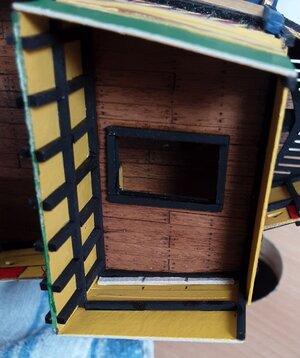
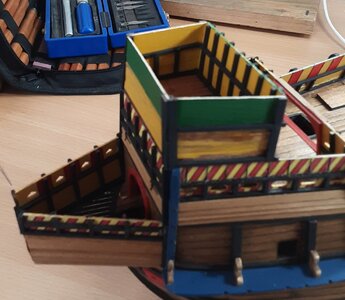
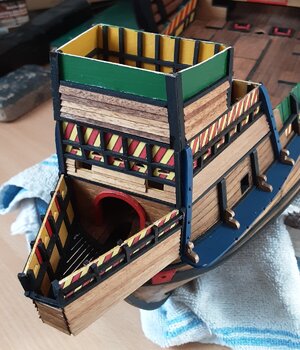
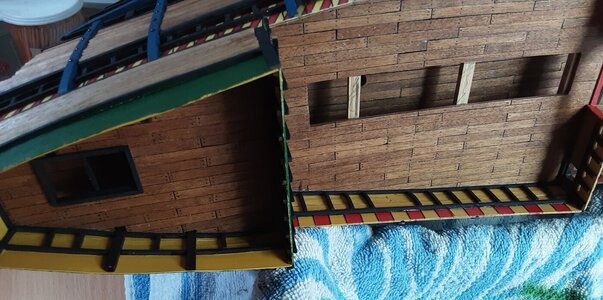
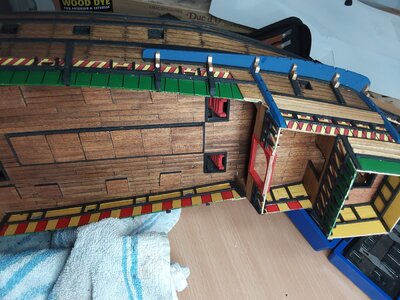
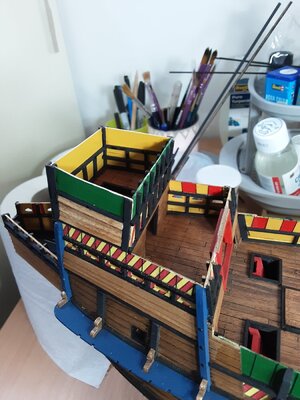
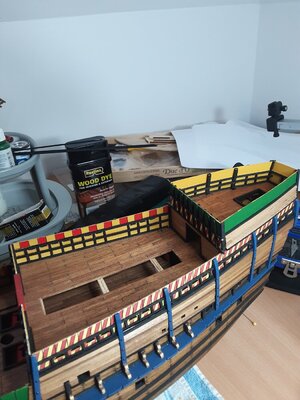
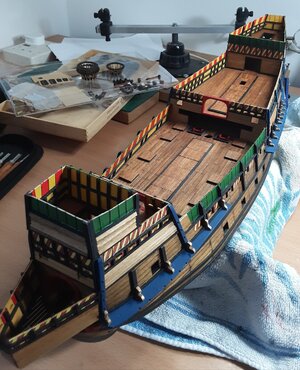




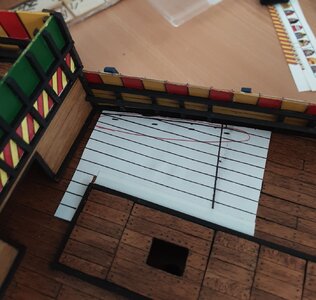
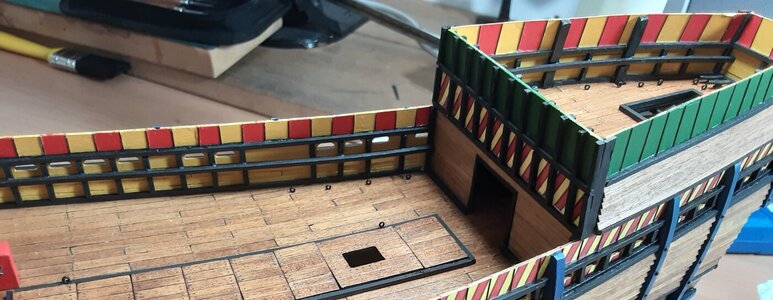
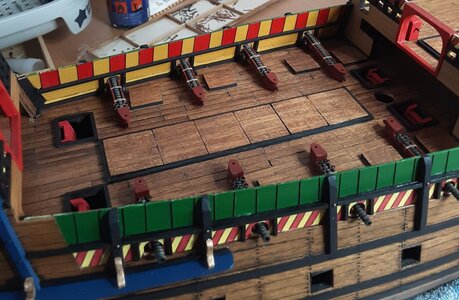
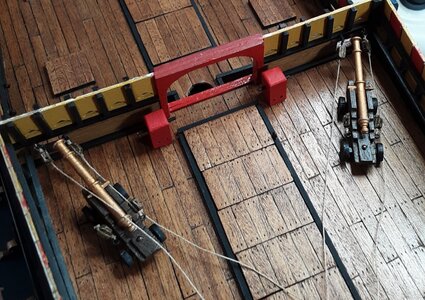
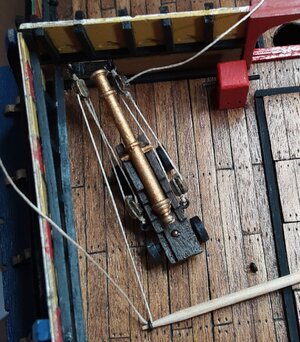
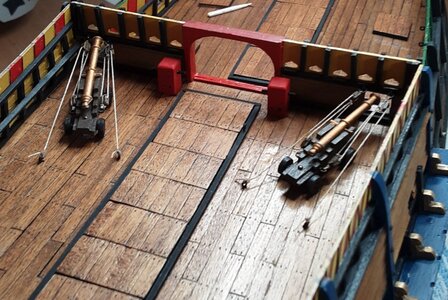
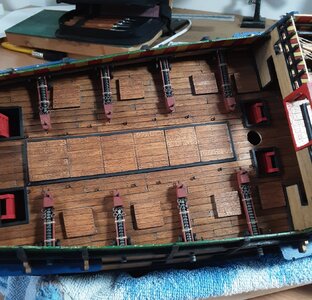
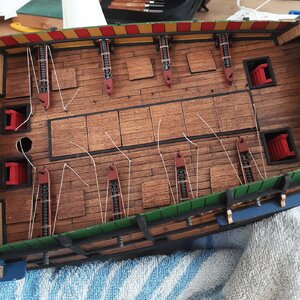
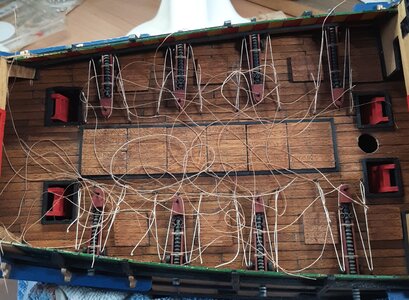
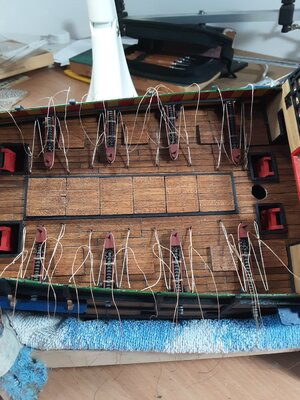
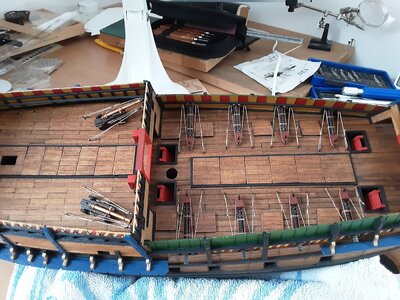
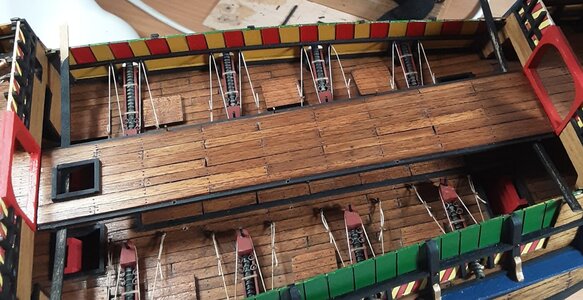
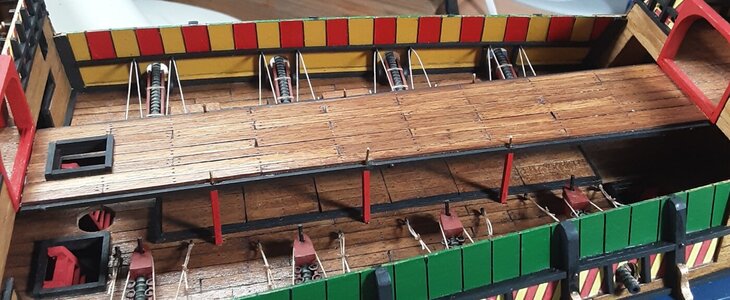
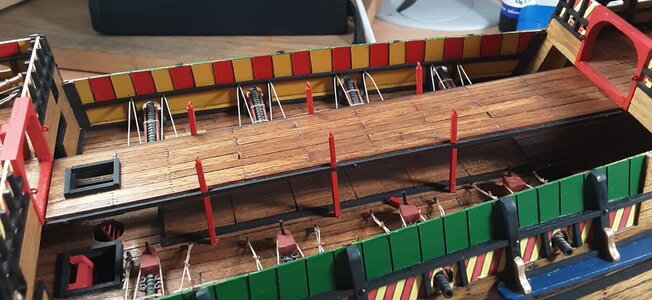
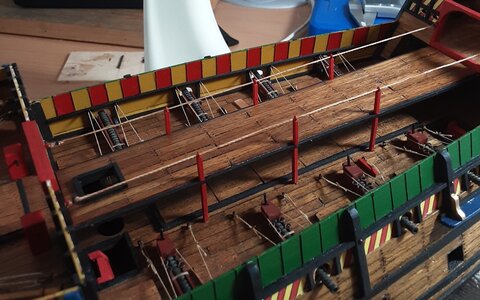
 I will not paint the hull. During the excavation of the actual hull there was evidence of what is termed 'White Stuff' below the waterline, but this was not analysed at the time and has been lost as a result of the conservation process. The depiction in the Anthony Roll (see earlier post) indicates that there was some coating below the waterline, and this might be supported '...by the absence of wood boring damage'. Anyway, we'll see how it turns out and then make a decision. Regards.
I will not paint the hull. During the excavation of the actual hull there was evidence of what is termed 'White Stuff' below the waterline, but this was not analysed at the time and has been lost as a result of the conservation process. The depiction in the Anthony Roll (see earlier post) indicates that there was some coating below the waterline, and this might be supported '...by the absence of wood boring damage'. Anyway, we'll see how it turns out and then make a decision. Regards.

